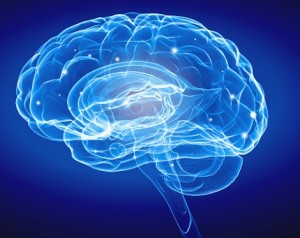 What is it about the human mind that allows people to learn and adapt to new situations? Researchers at Washington University in St. Louis have an answer. Building upon decades of brain research that established that the brain is composed of several hundred networks, the researchers identified what they call flexible hubs—major switching stations in the brain that work somewhat like an Internet router. These flexible hubs delegate tasks to appropriate brain networks and facilitate the rapid acquisition of new skills.
What is it about the human mind that allows people to learn and adapt to new situations? Researchers at Washington University in St. Louis have an answer. Building upon decades of brain research that established that the brain is composed of several hundred networks, the researchers identified what they call flexible hubs—major switching stations in the brain that work somewhat like an Internet router. These flexible hubs delegate tasks to appropriate brain networks and facilitate the rapid acquisition of new skills.
Flexible hubs form a well-connected core brain network in the lateral prefrontal cortex (the brain’s coordinator of thoughts and actions) and the posterior parietal cortex (a key player in producing planned movements). The approximately 12 major networks identified by the researchers connect the brain’s discrete, smaller networks. The flexible hubs aggregate networks by function, creating mega-networks for things like auditory functions, motor processes, attention, and more.
Evidence for the flexible hubs theory comes from two sources. First, the research team found that when a new task is processed, the flexible hubs in the fronto-parietal network make many quickly shifting connections with the brain’s specialized processing areas. Second, the researchers were able to decode information about which tasks are undertaken by which parts of the brain, revealing the network of connections.
Flexible hub theory proposes that the fronto-parietal network is home to flexible hubs that coordinate the brain’s many processes. These so-called “switching stations” take in tasks and portion out their components to the appropriate networks in the brain. Flexible hubs even have the ability to relay instructions for completely new tasks by directing instructions to the parts of the brain most equipped to carry them out. Based on their work with study participants, the researchers found that the flexible hubs did facilitate more rapid acquisition of novel tasks.
“It’s as if a conductor practiced short sound sequences with each section of an orchestra separately, then on the day of the performance began gesturing to some sections to play back what they learned, creating a new song that has never been played or heard before,” explained Michael Cole, Ph.D., postdoctoral research associate at Washington University and lead author of the study.
Flexible hub theory could have applications in helping people learn and work through novel situations, like learning to use new technology. Future research will investigate how flexible hubs play a role in self-regulation.
This study is published in the journal Nature Neuroscience.
Previous news in the brain:

